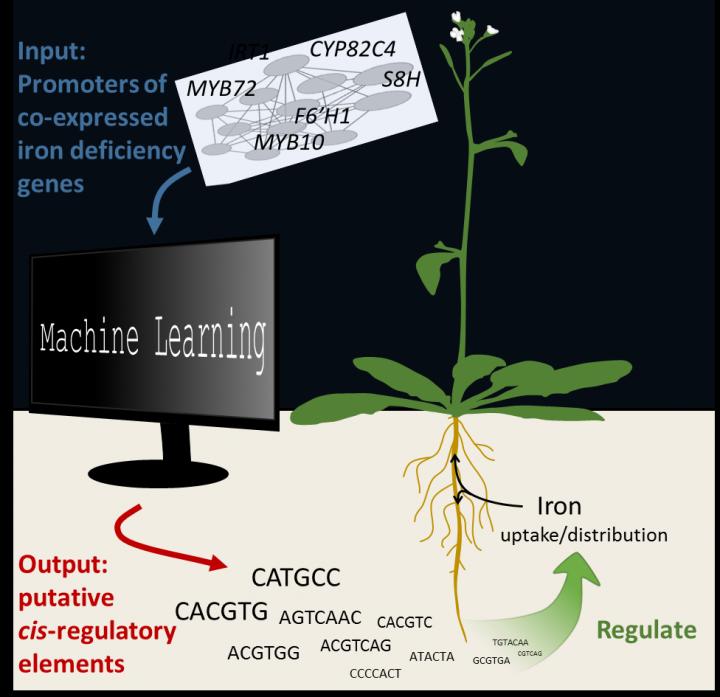

Bioinformatics work steps needed to identify the cis-regulatory elements. The findings of the study help to understand genetic regulation of plant responses to iron deficiency.
Credit: HHU / Birte Schwarz
When a plant is lacking important nutrients, it cannot simply move to another location where it can get the nutrients it needs. Instead, it has to adapt to the situation by adjusting its metabolism. It does this by activating certain programmes incorporated in its genome.
Iron is one of those nutrients that is essential for plants' growth and survival. It plays a role in photosynthesis and water regulation. Plants absorb iron through their roots, but the iron must be present in sufficient quantities and in a form that can be processed by the plant.
Past research has identified more than 1,000 genes in plant roots that can be active in regulatory processes responding to iron deficiency. 'Cis-regulatory elements' (CREs) coordinate the specific genetic response.
A team of researchers working under Prof. Dr. Petra Bauer from the HHU Institute of Botany and Prof. Dr. Shin-Han Shiu from the Department of Plant Biology at MSU has developed a method for predicting candidates for these specific CREs. The team used an artificial intelligence method known as the machine learning approach.
The approach helped the researchers to identify roughly 100 CRE candidates in the model plant Arabidopsis thaliana (thale cress). They used this knowledge to determine transcription factors – specific CRE-binding proteins that trigger the response to iron deficiency and activate it in the root cells.
For optimised plant cultivation, it is important to know how the plant responds in situations of scarcity and whether any targeted cultivation measures can be taken to produce particularly robust plants.
“Growers can use the CREs identified to increase iron uptake in new plant varieties in a targeted manner”, emphasises Prof. Bauer. Her staff member and first author of the study, Dr. Birte Schwarz, adds: “In this way, a better supply of iron can be ensured along with better adaptation of the plants to poor soil.”
###
The bioinformatics work was primarily carried out at MSU, with Dr. Schwarz making a key contribution to this work during her six-month stay in the USA as part of her doctoral studies. This international research collaboration is funded by the DFG (German Research Foundation) within the framework of the International Graduate Programme iGrad-Plant (https:/
The bioinformatics strategy developed is more versatile in use. It can also serve to find the authoritative regulation mechanisms for other stress factors, such as water scarcity or pathogen attack.
Original publication
Birte Schwarz, Christina B Azodi, Shin-Han Shiu, Petra Bauer, Putative cis-regulatory elements predict iron deficiency responses in Arabidopsis roots, Plant Physiology, January 2020
DOI: 10.1104/pp.19.00760














